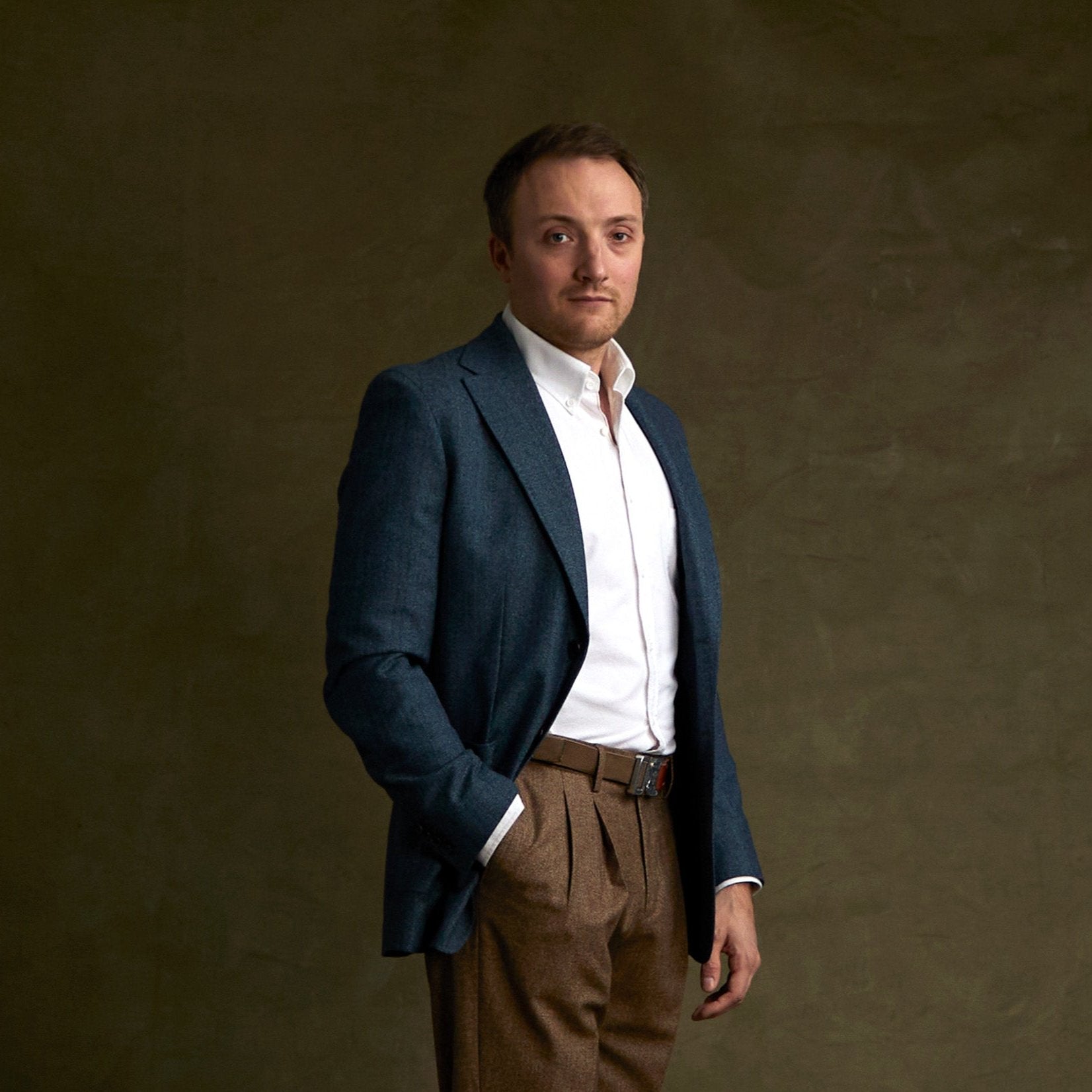As part of the release of our new suits , I wanted to tell you the story of the unique fabric we chose for the Bellagio . Its very pronounced "powder grain" appearance is the result of a collaboration between two passionate clothing agents and the know-how of Estéthia, a high-end century-old Italian weaver appreciated by many luxury houses.
A fabric that is almost a century old
It all began more than two centuries ago, in 1757 in Italy, with the Conte family who created the GB Conte house in Schio, specializing in coat-weight fabric.
But 17 years ago, the large Italian group Marzotto bought GB Conte and integrated it into Estethia, founded in 2007.
The aim of this acquisition? To make Estéthia – GB Conte a high-end house , and to take advantage of its human size to create and explore, while benefiting from the significant resources of Marzotto and especially from the past and archives of GB Conte.
Marzotto was looking for a rough diamond to polish in order to have an offer that better meets the expectations of luxury houses: impeccable quality of course, but also with creativity with more textures and flair.

The logo of the Estéthia – GB Conte house, belonging to the Marzotto group.
The revival of Estethia
Marzotto will therefore invest in Estéthia's R&D : while its offer was mainly composed of plain and dark suit fabrics, they will explore textures, colors and material mixes.


Two examples of textured and creative fabrics: on the left, a range of speckled chevrons and on the right, fluffy wools with a three-dimensional look and a honeycomb texture.
And 17 years ago, Estéthia crossed paths with the Gestri agents (Eugenio and Xavier) , in Paris. Eugenio and Xavier run a showroom where they present several suppliers of very high-end Italian fabrics, who work mainly with the biggest luxury houses.
They were seduced by Estethia because it was the best of both worlds:
- the means, the industrial tool, the quality and the traceability of what can be expected from a large group like Marzotto,
- and the creativity and exploration of a weaver on a human scale.
They are also great fabric enthusiasts like few I have come across.
Precisely because they love it, they regularly hold exhibitions around fashion.
In search of the forgotten fabric
It was during an exhibition at the Petit Palais dedicated to the work of Yves Saint Laurent in 2010 that Eugenio and Xavier were struck by a piece of “grain de poudre” fabric mainly used for tuxedos.

Poster for the Yves Saint Laurent exhibition at the Petit Palais, in 2010
They love this subtle texture and this drape that gives structure. This choice of fabric was far from trivial: Saint Laurent was known for using masculine fabrics for his women's clothing , it was his way of promoting female emancipation at a time when women's ready-to-wear was limited to very fluid and light fabrics.
This creative vision, totally innovative at the time, gave birth to his famous women's tuxedo jackets which made his reputation.

Tuxedo jackets visible during the exhibition. Photo source: YSL Museum Paris
As they left the exhibition, they thought they would like to offer such a fabric to their customers. They then bought a vintage Yves Saint Laurent piece and investigated to find out who the weaver behind it was.
They quickly learned that it was the Dormeuil house that sold this fabric to the Yves Saint Laurent house. The Dormeuil house itself bought this fabric in Italy, but there was a problem: despite all its research, it was impossible to go back further, and the mystery of the weaver behind this grain of powder remains.
But they don't give up, they stick to their idea, and they think about who could make their project a reality. They need to have a small weaver who is flexible, creative, willing, with a high-end sensitivity...
With their vintage Yves Saint Laurent jacket under their arm, the Gestri agents turned to Estéthia , who accepted the project to develop this fabric.
This is the creation of the E7011 fabric, a reference that has become famous in the design studios of luxury houses. And it is a huge success, all the luxury goods start buying Estéthia fabrics.
The flight of Estethia
There is one designer who loves the E7011 more than any other, and that is the legendary Phoebe Philo , who was in charge of the Céline collections at the time.
But she wanted to push the masculine side of the fabric even further, with something thicker and more structured. Estéthia therefore developed the reference E7031 for her , which is a more pronounced grain of powder, and which would become Estéthia's gateway to women's fashion, at a time when women were buying smoking jackets at Dior Homme.

Phoebe Philo, during the Celine fall-winter 2013-2014 campaign shoot, with star model Daria Werbowy. Source: Le Monde, all rights reserved
Today, all the luxury houses buy from Estéthia, and I am very proud that BonneGueule is one of the brands that works with these beautiful fabrics.
But then why such enthusiasm for these two fabrics?
As Xavier says: “you always have a perfect drape with this fabric”. Indeed, it is almost wrinkle-free and gives structure. This roundness and this “haute couture” side specific to Estéthia also really appealed to me.
But I wanted an even more textured fabric, with a more pronounced grain, while still retaining the characteristic touch of the E7011 and 37031 from Estéthia…
So we chose this other fabric, “very relief”, with this unique drape . I had a huge crush on this old-fashioned hand and the way it catches the light.



The impeccable drape of the Estéthia fabric, highlighted by (the very stylish) Kévis Manzi.




